Multigenerational Home Renovation Tax Credit (“MHRTC”)
 Budget 2022 proposes to introduce the MHRTC, which is a refundable tax credit that applies to individuals who incur eligible expenses in renovating their home to create a second dwelling unit for an eligible senior who is a “qualifying relation”. The credit is computed as 15 per cent of the eligible expenses, to a maximum of $50,000, for a maximum refundable credit of $7,500. The MHRTC will apply to eligible expenses incurred on or after January 1, 2023 to create a secondary dwelling.
Budget 2022 proposes to introduce the MHRTC, which is a refundable tax credit that applies to individuals who incur eligible expenses in renovating their home to create a second dwelling unit for an eligible senior who is a “qualifying relation”. The credit is computed as 15 per cent of the eligible expenses, to a maximum of $50,000, for a maximum refundable credit of $7,500. The MHRTC will apply to eligible expenses incurred on or after January 1, 2023 to create a secondary dwelling.
Eligible Persons
Eligible persons for the purposes of the MHRTC are:
- Seniors who are 65 years of age or older at the end of the taxation year that includes the end of the renovation period.
- Adults with disabilities who are 18 years of age or older at the end of the taxation year that includes the end of the renovation period, and who are eligible for the Disability Tax Credit at any time in that year.
Qualifying Relations
A qualifying relation in respect of an eligible person who claims the MHRTC would be an individual who is 18 years of age or older at the end of the taxation year that includes the end of the renovation period and is a parent, grandparent, child, grandchild, brother, sister, aunt, uncle, niece, or nephew of the eligible person.
Who can claim the MHRTC?
- An individual who ordinarily resides, or intends to ordinarily reside, in the eligible dwelling within twelve months after the end of the renovation period and who is:
- An eligible person;
- The spouse or common-law partner of the eligible person;
- A qualifying relation, in respect of an eligible person; or
- A qualifying relation, in respect of an eligible person, who owns the eligible dwelling.
- More than one individual can claim the MHRTC as long as no more than 15 per cent of the maximum $50,000 expenditure limit is claimed between them.
Eligible Dwelling
An eligible dwelling would be defined as a housing unit that is:
- Owned (either jointly or otherwise) by the eligible person, the spouse or common-law partner of the eligible person or a qualifying relation in respect of the eligible person; and
- Where the eligible person and a qualifying relation in respect of the eligible person ordinarily reside, or intend to ordinarily reside, within 12 months after the end of the renovation period.
An eligible dwelling would include the land subjacent to the housing unit and the immediately contiguous land but would not the portion of that land that exceeds the greater of ½ hectare and the portion of that land that the individual establishes is necessary for the use and enjoyment of the housing unit as a residence.
Qualifying Renovation
A qualifying renovation would be defined as a renovation or alteration of, or addition to, an eligible dwelling that is:
- Of an enduring nature and integral to the eligible dwelling; and
- Undertaken to enable an eligible person to reside in the dwelling with a qualifying relation, by establishing a secondary unit within the dwelling for occupancy by the eligible person or the qualifying relation.
A secondary unit would be defined as a self-contained dwelling unit with a private entrance, kitchen, bathroom facilities, and sleeping area. The secondary unit could be newly constructed or created from an existing living space that did not already meet the requirements to be a secondary unit. To be eligible, relevant building permits for establishing a secondary unit must be obtained and renovations must be completed in accordance with the laws of the jurisdiction in which an eligible dwelling is located.
One qualifying renovation would be permitted to be claimed in respect of an eligible person over their lifetime.
Renovation Period
The renovation period means a period that:
- Begins at the time that an application for a building permit for a qualifying renovation is submitted; and
- Ends at the time when the qualifying renovation passes a final inspection, or proof of completion of the project according to all legal requirements of the jurisdiction in which the renovation was undertaken is otherwise obtained.
The MHRTC would be available for the taxation year that includes the end of the renovation period.
Eligible Expenses
Eligible expenses would include the cost of labour and professional services, building materials, fixtures, equipment rentals and permits. Items such as furniture, appliances and regular repairs and maintenance are not integral to the creation of the dwelling and therefore, not eligible. Receipts for the eligible expenses must be retained.
Eligible expenses must be reduced by any reimbursement or any other form of assistance that an individual is or was entitled to receive, including any related rebates. Furthermore, expenses would not be eligible for the MHRTC if they are claimed under the Medical Expense Tax Credit and/or Home Accessibility Tax Credit.

 Budget 2022 proposes to introduce the HSA, which is a new registered account to help individuals save for their first home. The HSA will be available at some point in 2023. Highlights of the HSA include:
Budget 2022 proposes to introduce the HSA, which is a new registered account to help individuals save for their first home. The HSA will be available at some point in 2023. Highlights of the HSA include:  Budget 2022 proposes to increase the maximum HBTC from $750 to $1,500 for qualifying home purchases made on or after January 1, 2022. The HBTC is a non-refundable tax credit available to individuals who purchase a first-time home.
Budget 2022 proposes to increase the maximum HBTC from $750 to $1,500 for qualifying home purchases made on or after January 1, 2022. The HBTC is a non-refundable tax credit available to individuals who purchase a first-time home.  Budget 2022 proposes to introduce the MHRTC, which is a refundable tax credit that applies to individuals who incur eligible expenses in renovating their home to create a second dwelling unit for an eligible senior who is a “qualifying relation”. The credit is computed as 15 per cent of the eligible expenses, to a maximum of $50,000, for a maximum refundable credit of $7,500. The MHRTC will apply to eligible expenses incurred on or after January 1, 2023 to create a secondary dwelling.
Budget 2022 proposes to introduce the MHRTC, which is a refundable tax credit that applies to individuals who incur eligible expenses in renovating their home to create a second dwelling unit for an eligible senior who is a “qualifying relation”. The credit is computed as 15 per cent of the eligible expenses, to a maximum of $50,000, for a maximum refundable credit of $7,500. The MHRTC will apply to eligible expenses incurred on or after January 1, 2023 to create a secondary dwelling.  The HATC is a non-refundable tax credit that provides recognition of eligible home renovation or alteration expenses in respect of an eligible dwelling of a qualifying individual. A qualifying individual is an individual who is eligible to claim the Disability Tax Credit at any time in a tax year, or an individual who is 65 years of age or older at the end of a tax year. The HATC is currently calculated as 15 per cent of eligible home renovation expenses to a maximum of $10,000, for a maximum credit of $1,500.
The HATC is a non-refundable tax credit that provides recognition of eligible home renovation or alteration expenses in respect of an eligible dwelling of a qualifying individual. A qualifying individual is an individual who is eligible to claim the Disability Tax Credit at any time in a tax year, or an individual who is 65 years of age or older at the end of a tax year. The HATC is currently calculated as 15 per cent of eligible home renovation expenses to a maximum of $10,000, for a maximum credit of $1,500.  Budget 2022 proposes to introduce a new deeming rule to ensure profits from flipping residential real estate are always subject to full taxation (i.e., no capital gains treatment). To this end, profits that are triggered on the disposition of residential property (including a rental property) that was owned for less than 12 months would be deemed to be fully taxable business income.
Budget 2022 proposes to introduce a new deeming rule to ensure profits from flipping residential real estate are always subject to full taxation (i.e., no capital gains treatment). To this end, profits that are triggered on the disposition of residential property (including a rental property) that was owned for less than 12 months would be deemed to be fully taxable business income.  Budget 2022 proposes to introduce the LMDT to recognize that certain tradespeople need to travel and relocate for their work in the construction industry. The LMDT would allow eligible workers to deduct up to $4,000 in eligible expenses per year, thereby reducing their taxable income.
Budget 2022 proposes to introduce the LMDT to recognize that certain tradespeople need to travel and relocate for their work in the construction industry. The LMDT would allow eligible workers to deduct up to $4,000 in eligible expenses per year, thereby reducing their taxable income.  Budget 2022 proposes to provide a broader definition of patient in cases where an individual relies on a surrogate or a donor in order to become a parent. Patient would be defined in these circumstances as:
Budget 2022 proposes to provide a broader definition of patient in cases where an individual relies on a surrogate or a donor in order to become a parent. Patient would be defined in these circumstances as:  Disbursement Quota Changes
Disbursement Quota Changes  Budget 2022 proposes to introduce a one-time Canada Recovery Dividend (“CRD”) and additional tax on banks and life insurers.
Budget 2022 proposes to introduce a one-time Canada Recovery Dividend (“CRD”) and additional tax on banks and life insurers. 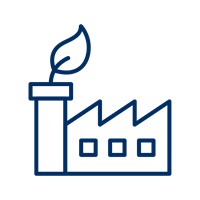 Carbon capture, utilization, and storage (“CCUS”) is a suite of technologies that capture carbon dioxide (CO2) emissions from fuel combustion, industrial processes or directly from the air, to either store the CO2 or use the CO2 in industry.
Carbon capture, utilization, and storage (“CCUS”) is a suite of technologies that capture carbon dioxide (CO2) emissions from fuel combustion, industrial processes or directly from the air, to either store the CO2 or use the CO2 in industry.  Budget 2022 proposes to expand eligibility under Capital Cost Allowance Classes 43.1 and 43.2 to include air-source heat pumps primarily used for space or water heating. Eligible property would include equipment that is part of an air-source heat pump system that transfers heat from the outside air, including refrigerant piping, energy conversion equipment, thermal energy storage equipment, control equipment and equipment designed to enable the system to interface with other heating and cooling equipment. Eligible property would not include:
Budget 2022 proposes to expand eligibility under Capital Cost Allowance Classes 43.1 and 43.2 to include air-source heat pumps primarily used for space or water heating. Eligible property would include equipment that is part of an air-source heat pump system that transfers heat from the outside air, including refrigerant piping, energy conversion equipment, thermal energy storage equipment, control equipment and equipment designed to enable the system to interface with other heating and cooling equipment. Eligible property would not include: 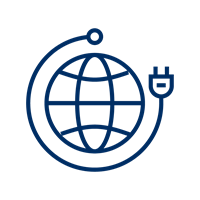
 Flow-through share agreements allow corporations to renounce or “flow through” both Canadian exploration expenses and Canadian development expenses to investors, who can deduct the expenses in calculating their taxable income.
Flow-through share agreements allow corporations to renounce or “flow through” both Canadian exploration expenses and Canadian development expenses to investors, who can deduct the expenses in calculating their taxable income.  Canadian-controlled private corporations (“CCPC”) have access to the SBD in respect of the first $500,000 of profits in the associated group of companies. With the SBD, the first $500,000 of profits are taxed at a much lower combined federal and provincial corporate tax rate (12.2% in Ontario). The SBD is reduced under two conditions, as follows:
Canadian-controlled private corporations (“CCPC”) have access to the SBD in respect of the first $500,000 of profits in the associated group of companies. With the SBD, the first $500,000 of profits are taxed at a much lower combined federal and provincial corporate tax rate (12.2% in Ontario). The SBD is reduced under two conditions, as follows:  The GAAR is intended to prevent abusive tax avoidance transactions. If abusive tax avoidance is established, the GAAR applies to deny the tax benefit created by the abusive transaction. The onus to prove GAAR has been established is on the part of the Canada Revenue Agency (“CRA”).
The GAAR is intended to prevent abusive tax avoidance transactions. If abusive tax avoidance is established, the GAAR applies to deny the tax benefit created by the abusive transaction. The onus to prove GAAR has been established is on the part of the Canada Revenue Agency (“CRA”). 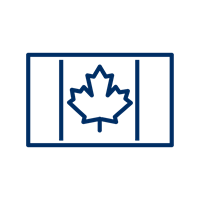 A CCPC can be migrated to a foreign jurisdiction, thereby making it a non-CCPC. This type of planning was sometimes sought to benefit from tax deferral opportunities in respect of investment income earned in the corporation. A CCPC that earns investment income is subject to the refundable corporate tax regime which applies a higher corporate tax rate (50.17% in Ontario) to investment income earned in the CCPC. This tax is partially refundable (30 2/3%) when the CCPC pays taxable dividends to its shareholders. A non-CCPC is not subject to the refundable corporate tax regime, such that investment income earned therein is subject to the lower general corporate tax rate (26.5% in Ontario). All to say that, by converting a CCPC to a non-CCPC, shareholders could defer a significant amount of tax on investment income.
A CCPC can be migrated to a foreign jurisdiction, thereby making it a non-CCPC. This type of planning was sometimes sought to benefit from tax deferral opportunities in respect of investment income earned in the corporation. A CCPC that earns investment income is subject to the refundable corporate tax regime which applies a higher corporate tax rate (50.17% in Ontario) to investment income earned in the CCPC. This tax is partially refundable (30 2/3%) when the CCPC pays taxable dividends to its shareholders. A non-CCPC is not subject to the refundable corporate tax regime, such that investment income earned therein is subject to the lower general corporate tax rate (26.5% in Ontario). All to say that, by converting a CCPC to a non-CCPC, shareholders could defer a significant amount of tax on investment income.  The foreign accrual property income (“FAPI”) rules aim to prevent Canadian taxpayers from gaining a tax deferral advantage by earning certain types of investment income through controlled foreign affiliates (“CFA”) (i.e., a non-resident corporation in which the taxpayer has, or participates in, a controlling interest). The rules do this by including the Canadian shareholder’s participating share of the CFA’s FAPI in the Canadian shareholder’s income in the year it is earned. If the Canadian shareholder is a CCPC, this amount is subject to the same additional refundable tax described above. In other words, the FAPI regime seeks to address any deferral advantage by subjecting FAPI earned in a CFA to tax on a current basis and at the same level as if it was earned in Canada.
The foreign accrual property income (“FAPI”) rules aim to prevent Canadian taxpayers from gaining a tax deferral advantage by earning certain types of investment income through controlled foreign affiliates (“CFA”) (i.e., a non-resident corporation in which the taxpayer has, or participates in, a controlling interest). The rules do this by including the Canadian shareholder’s participating share of the CFA’s FAPI in the Canadian shareholder’s income in the year it is earned. If the Canadian shareholder is a CCPC, this amount is subject to the same additional refundable tax described above. In other words, the FAPI regime seeks to address any deferral advantage by subjecting FAPI earned in a CFA to tax on a current basis and at the same level as if it was earned in Canada. 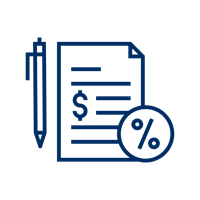 Canada is one of 137 members of the Organisation for Economic Co-operation and Development (OECD)/Group of 20 (G20) Inclusive Framework on Base Erosion and Profit Shifting (the Inclusive Framework) that have joined a two-pillar plan for international tax reform agreed to on October 8, 2021.
Canada is one of 137 members of the Organisation for Economic Co-operation and Development (OECD)/Group of 20 (G20) Inclusive Framework on Base Erosion and Profit Shifting (the Inclusive Framework) that have joined a two-pillar plan for international tax reform agreed to on October 8, 2021. 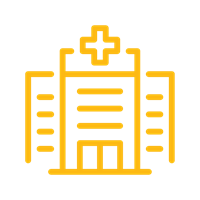 The eligibility for charities and non-profit organizations that provide health care services to claim a rebate equivalent to 83 per cent of the GST or federal component of the HST will be extended to include health care services that are provided without the involvement of a physician as long as a nurse practitioner is involved. This measure would generally apply to rebate claim periods ending after Budget Day in respect of GST/HST paid or payable after that date.
The eligibility for charities and non-profit organizations that provide health care services to claim a rebate equivalent to 83 per cent of the GST or federal component of the HST will be extended to include health care services that are provided without the involvement of a physician as long as a nurse practitioner is involved. This measure would generally apply to rebate claim periods ending after Budget Day in respect of GST/HST paid or payable after that date.
 Budget 2022 proposes to make all assignment sales in respect of newly constructed or substantially renovated residential housing taxable for GST/HST purposes. Furthermore, the amount received by the assignor from the assignee as reimbursement of the deposit the assignor made to the builder will be excluded from the assignment fee subject to GST/HST given that the deposit will be part of the taxable purchase price charged by the builder to the assignee. This measure would apply in respect of any assignment agreement entered into on or after the day that is one month after Budget Day.
Budget 2022 proposes to make all assignment sales in respect of newly constructed or substantially renovated residential housing taxable for GST/HST purposes. Furthermore, the amount received by the assignor from the assignee as reimbursement of the deposit the assignor made to the builder will be excluded from the assignment fee subject to GST/HST given that the deposit will be part of the taxable purchase price charged by the builder to the assignee. This measure would apply in respect of any assignment agreement entered into on or after the day that is one month after Budget Day.  Vaping products would be subject to a new excise duty based on the volume of vaping liquid in each vaping product.
Vaping products would be subject to a new excise duty based on the volume of vaping liquid in each vaping product. 



